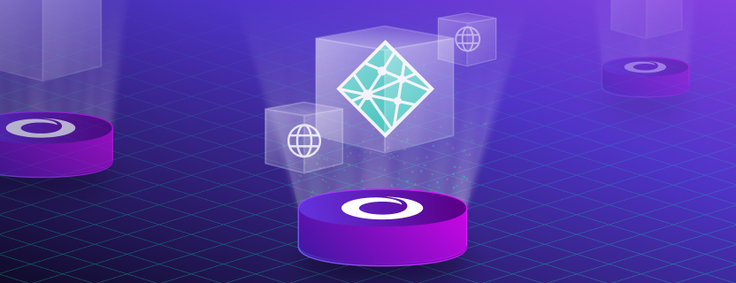
Do you have dusty domain names sitting on a virtual shelf? This December, SingleStore is partnering with Netlify to help you get out there and deploy your web apps for a good cause with Dusty Domains.
How many domain names do you have sitting on a virtual shelf someplace just gathering dust? I think most developers are amazing at thinking up cool projects to work on, but not so great at getting them finished and shipped. No shame at all, I have a couple of “dusty domains” too (TBH, probably way too many of them!). If you’re someone who has a couple of silly, clever or potentially viral web app ideas, then I have some good news for you.
This December, SingleStore is partnering with Netlify to help you get out there and deploy your web apps for a good cause, with Dusty Domains. Here’s how it works:
- Build a website! Anything your little heart dreams will do. Big, small, useful or completely silly projects are all encouraged.
- Deploy your project on Netlify.
- Submit your site by December 31st. We’ll review it and add it to the showcase.
- (Non)profit! With Netlify’s $50 matched 9x, your site sends $500 to great charities.
For every site you deploy to Netlify for Dusty Domains, SingleStore donates *$50 that will be matched by nine other companies, for a grand total of $500 per site you submit! Donations will be split across a few different CS education-focused nonprofits including Code2040, Resilient Coders, STEMTank and Black Girls Code.
But wait, there’s more!
Be sure to also submit your Dusty Domain project to the SingleStore Developer Community Forums, so we can help you get the word out about how cool your project is.
Keep an eye on the Netlify and SingleStore Developer Twitter accounts for site ideas, tips and more throughout the month. If you have trouble coming up with ideas, we’re happy to help out: Tweet us, or join us on the SingleStore Developer Community Forums. The community forums are the best place to get your SingleStore questions answered.
Personally, I would also recommend that you check out the SingleStore Developers site. There are tons of great developer projects and demos for many languages, frameworks, and integrations.
So, now it is time to dust off that domain and get building! Don’t forget to submit the site to dusty.domains. We can’t wait to see what you build!
*SingleStore will donate till we max out at \$10,000.
SingleStore + Netlify
Since Jamstack apps are static, they require you to connect to an API endpoint to dynamically send data after the pages have been compiled. This means that for you to connect your SingleStore application to Netlify, you will need to either create a web server or connect to a serverless endpoint to handle the requests.
The good news is that SingleStore is MySQL wire compatible. This means that you can connect to SingleStore with any tool, library or driver that is capable of connecting to a MySQL database. If you want information on how to connect to SingleStore using Node.js, be sure to check out the documentation.
If you don’t want to set up a whole web server to host your SingleStore API, you can also check out the SingleStore HTTP API. SingleStore provides HTTP APIs to execute SQL statements against your database over an HTTP connection. The HTTP APIs can be used to integrate SingleStore with serverless architecture, develop custom applications, and build seamless integrations with applications.
Note: The HTTP API is currently available as a preview feature, and you will need to reach out to SingleStore support to get this feature enabled on your account.
SingleStore + Jamstack
Netlify is the glue that holds Jamstack components together, but it doesn’t provide a data layer. A core principle of the Jamstack is that it doesn’t require a web server – however, there is clearly still a web server replying to HTTP requests. So how are developers building dynamic applications on the Jamstack? When and where are they querying data?
Let’s review some key components of Jamstack architecture. Jamstack sites:
- Have a decoupled frontend that lives globally on the edge.
- Pre-compile as much of the frontend as possible for performance and scalability.
- Allow the browser to access or process data at runtime using APIs — this could be client-side calls, serverless functions, your own backend or a third-party service.
A Jamstack data layer connects to the application via APIs (the “A” in “Jamstack”), whether that’s during build or run time. And it’s never been easier to connect your SingleStore database to your Netlify application, helping you rapidly build production-ready applications that will scale and be simple to maintain.
Okay, first of all, if you’re new here, what exactly is SingleStore?
SingleStore is a distributed, scale-out, general-purpose SQL database designed to have the versatility to run both analytical and operational workloads with great performance.
SingleStore excels at running complex interactive queries over large datasets (100s of terabytes) while running high-throughput, low-latency read and write queries (single-digit milliseconds) with predictable response times (millions of rows per second).
That means SingleStore should be your database of choice if you’re dealing with hundreds of terabytes or petabytes of data, you need your queries to return in milliseconds instead of minutes and you need to handle massively concurrent ingestion of data for your application.

Getting started with SingleStore
Are you looking for the fastest possible way to get a new SingleStore Cluster up and running while testing out sample datasets to experiment with and use? Check out our Getting Started Guide. It’s available as a short video and a blog post:
Video:
Getting Started with SingleStore
Blog:
https://www.singlestore.com/blog/how-to-get-started-with-singlestore/
Dive into the SingleStore documentation
Official documentation will always be the most up-to-date reference for SingleStore. Find the latest getting started information here.
Thanks for dusting off your domain
We appreciate you giving your dusty domains new life, and giving to charity. Don’t forget to share your project to the SingleStore Developer Community Forums.
Interested in more from SingleStore?
Now that you’re familiar with SingleStore, what’s next? If you want to play around with SingleStore in the cloud, the best way is to spin up a database cluster on SingleStore and try it out for yourself! You can sign up for FREE here: https://www.singlestore.com/cloud-trial/
You can also check out the SingleStore Training page for more self-paced courses like Schema Design, Data Ingestion, Optimizing Queries and more.
And don’t forget to follow us on Twitter to keep up on more cool dev stuff.




